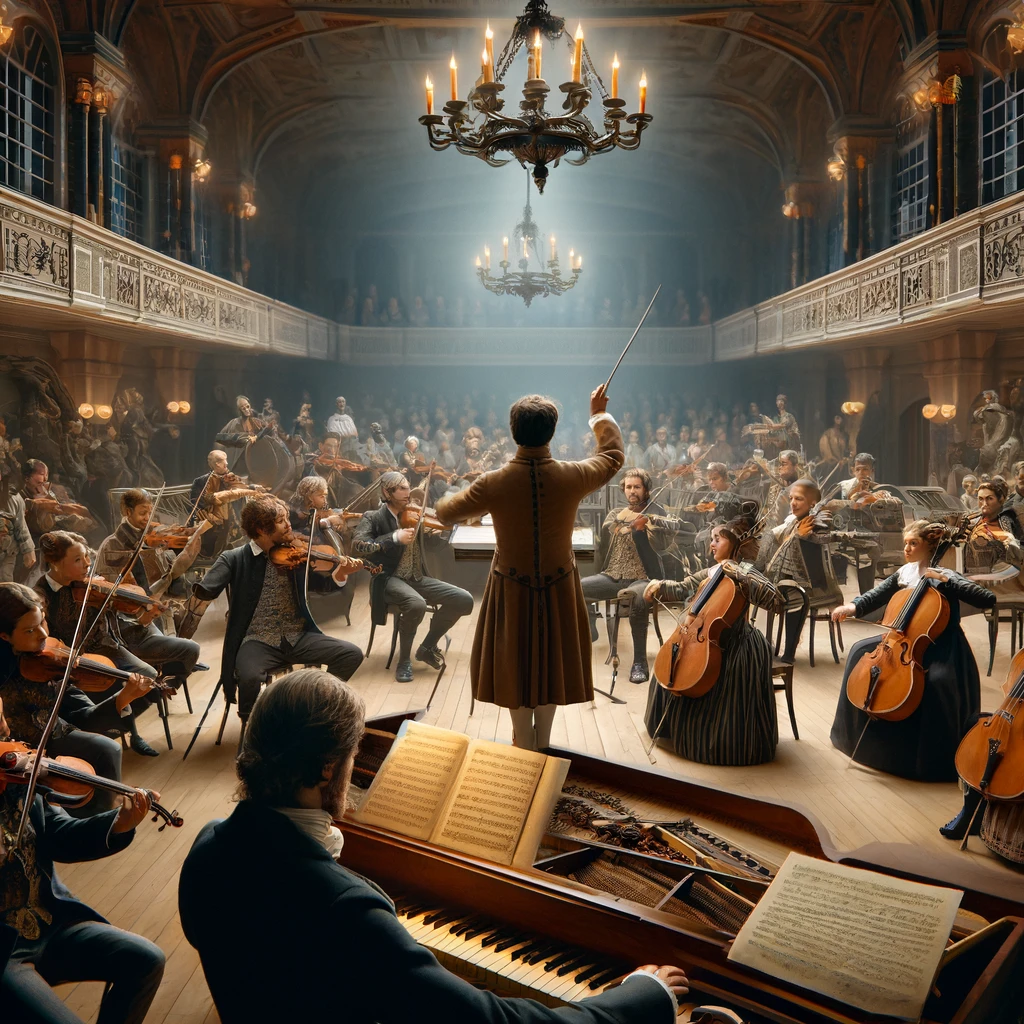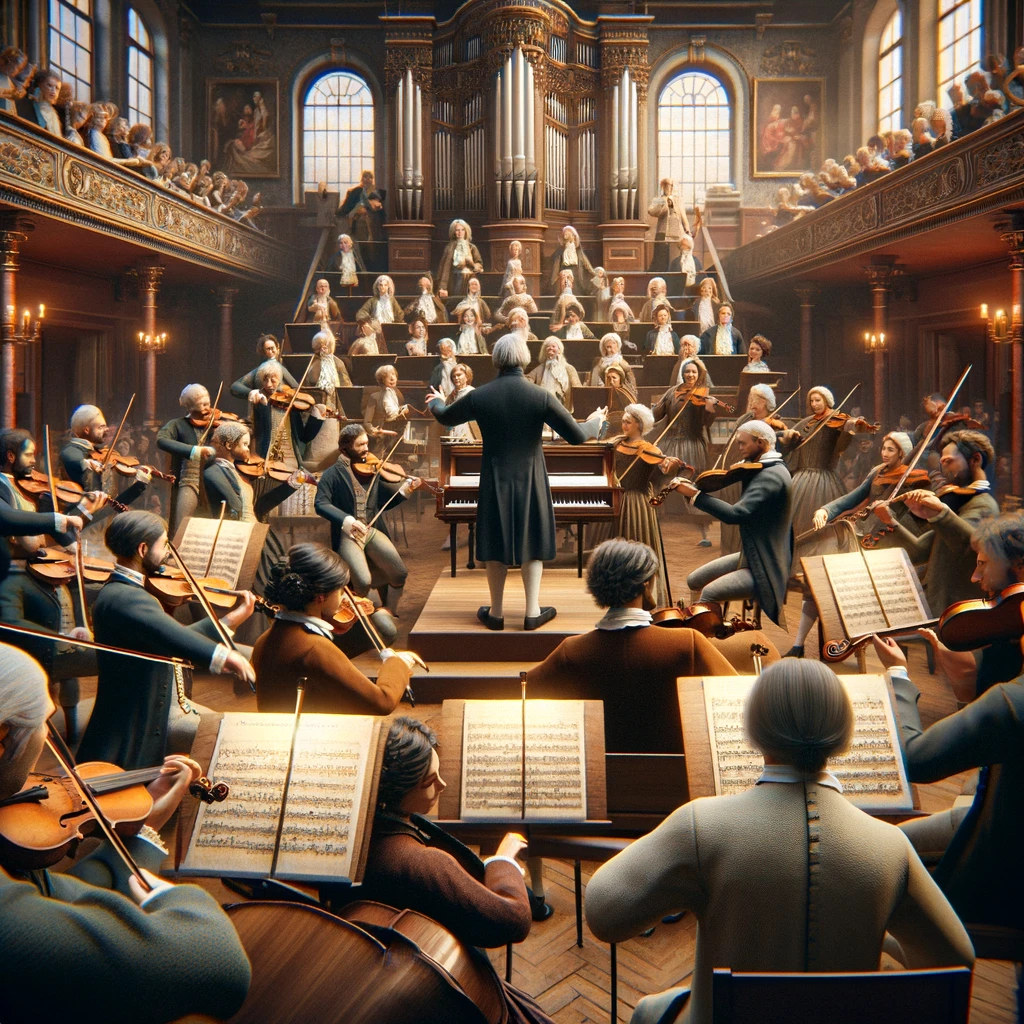
Exploring Beethoven’s Music Through Historical Practice
Ludwig van Beethoven is often hailed as a revolutionary composer whose works have captivated audiences for centuries. His music, ranging from intimate piano sonatas to grand symphonies, has stood the test of time, inviting listeners and performers alike to delve deep into its rich emotional and structural complexities. However, understanding Beethoven’s music as he might have intended requires more than just reading the notes on a page—it demands an exploration of historical performance practice. This approach seeks to rediscover how Beethoven’s compositions were originally understood and performed, shedding new light on old classics.
What is Historical Performance Practice?
Historical performance practice refers to the study and application of the methods and techniques used in the performance of music from particular historical periods. For Beethoven, this means considering how instruments, playing techniques, and interpretative choices from the late 18th and early 19th centuries can influence the way his music is performed today. This practice is not about merely recreating the past, but rather about using historical insights to enrich and deepen modern performances.
The Instruments of Beethoven’s Time
One of the key aspects of historical performance practice is the use of period instruments. During Beethoven’s lifetime, instruments were quite different from the modern versions we are familiar with today. For instance, the fortepiano, the precursor to the modern piano, had a lighter touch and a more transparent tone than today’s pianos. This affects everything from the dynamic range to the sustain of the notes.
String instruments equipped with gut strings, as opposed to today’s metal ones, produced a warmer, less brilliant tone. Similarly, brass and woodwind instruments of the period had a more distinct and less homogeneous sound than their modern counterparts. By using these instruments, performers can uncover nuances in Beethoven’s music that modern instruments might obscure.
Tempi and Tuning
Another critical element is the consideration of tempi (the speed at which a piece is played) and tuning. Beethoven was known for his meticulous marking of tempo in his scores, often using a metronome to specify the exact pace. However, the tempi were indicated for the instruments of his day. Modern instruments, which can project more sound and sustain notes longer, might naturally lead performers to choose different tempi.
Furthermore, the pitch standard (tuning) in Beethoven’s time was lower than today’s 440 Hz. Playing at historical pitch standards, usually around 430 Hz, not only alters the sound but can also change the character of the music, potentially bringing us closer to the sounds Beethoven intended.
Expression and Phrasing
Expression in Beethoven’s music is another area where historical performance practice provides valuable insights. The use of ornamentation, dynamics, and articulation in the Classical and early Romantic periods was often more varied and spontaneous than in later interpretations. By studying contemporary accounts and early recordings, performers can adopt a style of expression that is more aligned with the practices of Beethoven’s era.
Phrasing in Beethoven’s music also benefits from a historical perspective. Phrases were often played with a certain degree of rhythmic flexibility, allowing for subtle accelerations and decelerations within a line, something that modern interpretations sometimes smooth over in favor of strict metrical accuracy.
Challenges and Criticisms
Adopting historical performance practices is not without its challenges and criticisms. Some argue that this approach can become an academic exercise, more concerned with authenticity than with artistic expression. Others point out that we can never truly recreate the soundscapes of the past due to changes in everything from instrument construction to concert hall acoustics.
Despite these challenges, the goal of historical performance practice is not to restrict artistic choices but to expand them. By understanding the historical context and performance conventions of Beethoven’s time, musicians can make more informed interpretative decisions, potentially uncovering fresh and vibrant ways to experience his music.
Reinterpreting Beethoven through the lens of historical performance practice offers a fascinating glimpse into the musical world of one of history’s greatest composers. It allows performers and listeners to explore how the nuances of period instruments, tempi, tuning, expression, and phrasing can bring new dimensions to these beloved works. While we may never hear Beethoven’s music exactly as it was first performed, striving to understand and incorporate historical practices can deepen our appreciation and bring us closer to the essence of his musical genius.
In embracing these practices, we continue to keep Beethoven’s legacy alive, ensuring that each performance is as dynamic and evocative as possible, bridging the gap between his time and ours. Through this journey, we not only honor the past but also enrich our present musical landscape, proving that Beethoven’s work remains as relevant and powerful today as it was centuries ago.

The Role of Scholarly Research in Historical Performance
To truly delve into historical performance practice, scholars and performers often turn to extensive research. This includes studying Beethoven’s own manuscripts, letters, and contemporaneous accounts that describe performances of his time. This research helps performers understand not just the technical aspects of music performance, but also the artistic and expressive intentions behind Beethoven’s compositions.
Manuscripts and Sketches
Beethoven’s manuscripts and sketches are invaluable resources that offer insights into his compositional process and intentions. These documents sometimes reveal multiple revisions and alterations, suggesting that Beethoven was continually refining his musical ideas. By examining these manuscripts, performers can gain a deeper understanding of the nuances in phrasing, dynamics, and articulation that Beethoven envisioned.
Contemporaneous Accounts
Accounts from those who heard Beethoven’s performances or from the composer himself can also inform historical performance practice. These descriptions often provide details about the atmosphere of the performances, the audience’s reactions, and how the music was executed. For example, reports of Beethoven’s own piano playing indicate that he preferred a wide dynamic range and dramatic contrasts, which can influence how performers today might approach his piano works.
Incorporating Historical Insights into Modern Performances
The challenge for modern performers is to integrate these historical insights in a way that resonates with contemporary audiences. This involves a balance between historical accuracy and artistic expression, ensuring that the performances remain engaging and relevant.
Balancing Authenticity and Creativity
While historical performance practice strives for authenticity, it also opens up new avenues for creativity. Performers might blend historical techniques with modern interpretations to create a performance that is both informed and innovative. For example, using a fortepiano for a Beethoven sonata might be combined with modern interpretative touches that highlight the unique characteristics of the instrument while still engaging modern listeners.
Educational Outreach
Performers who specialize in historical performance practice often engage in educational outreach to share their insights and discoveries. Workshops, lectures, and demonstrations can help audiences understand the significance of historical practices and appreciate the differences they make in the music they hear. This educational aspect not only enriches the audience’s experience but also promotes a deeper appreciation of Beethoven’s work through a more informed listening.
The Impact on Contemporary Music Making
The influence of historical performance practice extends beyond classical music enthusiasts and Beethoven aficionados. It impacts contemporary music making by encouraging a broader perspective on how music can be interpreted and appreciated. It challenges performers and listeners to think critically about the choices they make in music and encourages a more thoughtful engagement with the works.
Influence on New Compositions
Composers today can also draw inspiration from historical performance practices. Understanding how instruments and expressive techniques were used in the past can inspire modern composers to explore new textures and sounds in their own works, potentially leading to a richer, more diverse musical landscape.
Fostering a Richer Musical Dialogue
Ultimately, historical performance practice fosters a richer dialogue between the past and the present, enriching our cultural heritage and deepening our understanding of music. As we continue to explore and reinterpret Beethoven’s legacy through the lens of historical performance, we not only preserve his music but also ensure that it continues to grow and evolve with each new generation of musicians and listeners.
In conclusion, revisiting Beethoven’s music through historical performance practice is more than a scholarly endeavor; it is a vibrant, living approach that brings new life to old notes. By embracing both the historical context and the creative possibilities it offers, performers and audiences alike can experience Beethoven’s genius in fresh and exciting ways, ensuring his music remains as dynamic and impactful as ever.